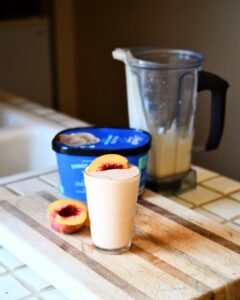“Neighborhood World Music Sessions at The Annex.”
Wednesday, October 19, 2022, 5-7:30pm will continue our music series held at El Cerrito Natural Grocery Company Prepared Food Annex (The Annex) 10387 San Pablo Avenue, El Cerrito
Mark Hummel and The Deep Basement Shakers
Mark Hummel – harmonica master, blues singer
Aaron Hammerman – piano and guitar
Dave Eagle – local percussion legend on washboard, spoons, suitcase, train whistles, animal calls, etc.
A new collaboration is taking place between Mark Hummel & the Deep Basement Shakers, as the two entities have locked forces to commit themselves to rockin’ away the pre-war blues & boogie-woogie styles in this piano, acoustic harmonica/vocal & washboard trio.
Grammy-nominated, two-time Blues Music Award winner, harmonica master, blues singer, bandleader, author, and entrepreneur Mark Hummel has been active since the early 1970s, when he moved to Berkeley from LA. Hummel has over thirty CDs to his credit and also is the creator of the Blues Harmonica Blowouts, which he started in 1991.
Hummel’s mastery of the blues genre, mixed with a knowledge of where the music comes from, is rare in this idiom. Mark has recorded/toured with Snooky Pryor, Lowell Fulsom, Eddie Taylor, Brownie McGhee, Barbara Dane, Jimmy Rogers, Charlie Musselwhite, Billy Boy Arnold, Huey Lewis, Lazy Lester, Anson Funderburgh (his co-partner in his latest project, Golden State-Lone Star), Charles Brown, Willie “Big Eyes” Smith & many more. Hummel has been steadily touring around the world since 1984.
Mark Hummel started playing harmonica in 1970 and is considered one of the premier blues harmonica players of his generation. Thanks to over thirty recordings since 1985, including the Grammy nominated 2013 release Blind Pig recording Remembering Little Walter (part of the Blues Harmonica Blowout CD series). Mark Hummel’s Blues Harmonica Blowout™ started in 1991 and have featured every major legend (Mayall, Musselwhite, Cotton, etc.) on blues harp as well as almost every player of note on the instrument – a who’s who of players.
Specializing in primal, joint-rockin’ barrelhouse blues n’ boogie, the Deep Basement Shakers are an East Bay trio with a stripped down but powerful sound, featuring local traditional American music specialist Aaron Hammerman on piano and guitar, and local percussion legend Dave Eagle (the Right Time, Rusty Zinn, Zamico) on washboard, spoons, suitcase, train whistles, animal calls, etc.
We are proud to present this series in partnership with Javier Navarrette Music and SunJams.
Javier Navarrette Music continues to bring live music to several venues around the Bay Area. Javier has been a professional musician and music educator in the Oakland Unified School District for the past 20 years. Over the past 2 years Navarrette has produced outdoors events that have proven instrumental in enabling musicians to deal with some of the fallout of the pandemic and shutdown that followed. Most recently he has been curating “Modúpue Sundays at the Brooklyn Basin.” These musical productions ran from June–November 2021 at the new Oakland hot spot, the Brooklyn Basin, with internationally known, Bay Area musical legends.
SunJams is committed to funding children’s music education in underserved public elementary schools. Your donation will help support this ongoing program.
Our events are fundraisers, we support childhood music education in public elementary schools. We have partnered with the California Symphony’s Sound Minds program, providing music education in San Pablo since 2012.
In addition, we need to raise funds to continue bringing you this exciting new live music program. We are committed to paying musicians fair compensation for their performance, and the Annex has pledged to help us do that with an ongoing donation that covers some of those needs. Our donors and audience members are an essential part of this support. All of the proceeds will go directly to our network of local musicians, each of whom have been severely impacted by the lack of events during the COVID-19 pandemic.
Whether you donate $1, $10, $100, or $1000 – any amount helps and will allow us to keep bringing music to our community! As always, your donation to our 501(c)3 may qualify as tax exempt.
We thank BAY AREA NEUROINTENSIVISTS ( Dr. Moussa Yazbeck) for their generous unrestricted grant to support this series.
SunJams will be taking cash or check donations at check-in, during intermission & at the end of the show.
In addition, we need to raise funds to continue bringing you this exciting new live music program. All of the proceeds will go directly to our network of local musicians, each of whom have been severely impacted by the lack of events during the COVID-19 pandemic.
Whether you donate $10, $100, or $1000 – any amount helps and will allow us to keep bringing music to our community! As always, your donation to our 501(c)3 may qualify as tax exempt.
COVID RELATED SAFETY MEASURES
Please be safe. Feel free to wear a mask if you prefer.
TICKETS
Tickets are NOT required for this venue, you can simply come in, order food and beverages at the Annex counter and pay at the registers.
Time: 5-7:30pm
Presented by
Modupue Productions ( Javier Navarrette)
Music at Sunjams ( Amer Budayr )
The Annex (The Natural Grocery Company, Employee Owned since 2002)











